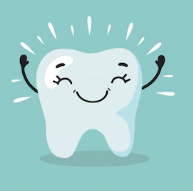Facial bruising after dental treatment is uncommon, but when it does occur, it’s usually linked to prolonged bleeding caused by delayed clot formation.
That may sound complicated, but don’t worry, we’ll walk you through it in a simple, easy-to-understand way.
Understanding Bruising
A bruise (also called a contusion) forms when blood collects beneath the skin. As this trapped blood breaks down, the color of the bruise changes over time.
Typical bruise colors:
- Red
- Blue
- Purple
- Black
- Green
- Yellow
Bruises generally start out red or pink, darken to purple or blue within the first few days, then gradually shift to green-yellow as they heal. For a detailed timeline, you can refer to MedLinePlus.
Why Blood Pools Under the Skin
Most bruises form when small blood vessels are damaged by an impact or injury, allowing blood to leak under the skin.
Common reasons for contusions:
- Blunt trauma (being hit, slapped, or bumped)
- Falls
- Banging into furniture
- Blood draws or IV placement
- Dental procedures (fillings, extractions, injections, root canals)
Bruising can also stem from underlying bleeding or clotting disorders such as:
- Ehlers–Danlos syndrome: Causes fragile blood vessels and easy bruising.
- Hemophilia: A clotting disorder involving low levels of Factor VIII. People with less than 5% functional Factor VIII often experience abnormal bleeding and frequent bruising.
Patients taking anticoagulants (blood thinners) are also at higher risk for bruising with any procedure that causes bleeding.
How Dental Procedures Can Cause Facial Bruising
Bruising after dental work occurs when blood clotting is delayed and bleeding continues longer than expected. This can happen with any procedure that draws blood or involves an injection.
Dental treatments that may result in bruising:
- Extractions
- Wisdom teeth removal
- Dental implants
- Gum surgeries (e.g., osseous surgery)
- Alveoloplasty
- Dental fillings
- Local anesthetic injections
Typical signs & symptoms:
- Initial swelling
- Bruising over the next few days
- Starts red/pink → turns purple/blue → finishes green/yellow
- Gradual resolution over a few weeks
For surgical procedures like extractions or implants, the explanation is straightforward: more bleeding creates more opportunity for pooled blood to discolor the skin.
But what about bruising after a simple filling or injection? Let’s break that down.
Bruising After a Dental Filling
Bruising from a dental filling doesn’t come from the filling itself—it’s caused by the anesthetic injection given beforehand.
Where the bleeding comes from:
- The needle punctures soft tissue, which creates minor bleeding.
- The nerve being targeted often lies close to large blood vessels.
- Occasionally, the needle may brush or nick a blood vessel, causing additional bleeding.
The inferior alveolar nerve block, for example, is administered near the inferior alveolar artery. Because the nerve and artery run parallel, some contact is unavoidable.
Most of the time, the body clots the area immediately, preventing any discoloration. But if clotting is delayed—or if the patient has a clotting disorder—swelling or bruising can develop.
Who Experiences This Most Often?
Although rare overall, bruising is more common in:
- Older adults
- Patients undergoing major surgeries (extractions, implants)
- Individuals taking blood thinners
Younger patients typically heal faster and are less likely to experience this complication.
Treatment & Home Care
Facial bruising after dental work resolves naturally without any formal treatment. Healing may take a couple of weeks—and in some cases, more than a month.
What you can do to feel better:
Cold compress (first 48 hours):
Helps reduce swelling and slow bleeding under the skin.
Warm compress (after 48 hours):
Improves circulation, helping stagnant blood disperse and fade.
Pain relievers:
Use acetaminophen if needed.
Avoid ibuprofen and aspirin, as they may worsen bleeding.
Myth-busting:
Toothpaste does not help bruising heal. Stick to compresses instead.
How to Know You’re Healing
You can track your recovery by monitoring:
1. Decreasing symptoms
- Less swelling
- Less pain each day
2. Color progression of the bruise
As long as the bruise continues moving through predictable color stages, you’re healing normally.
Final Thoughts
Bruising after dental work is unusual, but it can happen—especially if you’re older, on blood thinners, or have an underlying clotting issue. While it may look concerning, it’s a self-limiting condition that fades on its own.
With proper care and a little patience, the discoloration will resolve completely.
Disclaimer
The contents of this website, such as text, graphics, images, and other material are for informational purposes only and are not intended to be substituted for professional medical advice, diagnosis, or treatment. Nothing on this website constitutes the practice of medicine, law or any other regulated profession.
No two mouths are the same, and each oral situation is unique. As such, it isn’t possible to give comprehensive advice or diagnose oral conditions based on articles alone. The best way to ensure you’re getting the best dental care possible is to visit a dentist in person for an examination and consultation.
SAVE TIME AND MONEY AT ANY DENTIST

Less dental work is healthier for you. Learn what you can do to minimize the cost of dental procedures and avoid the dentist altogether!

